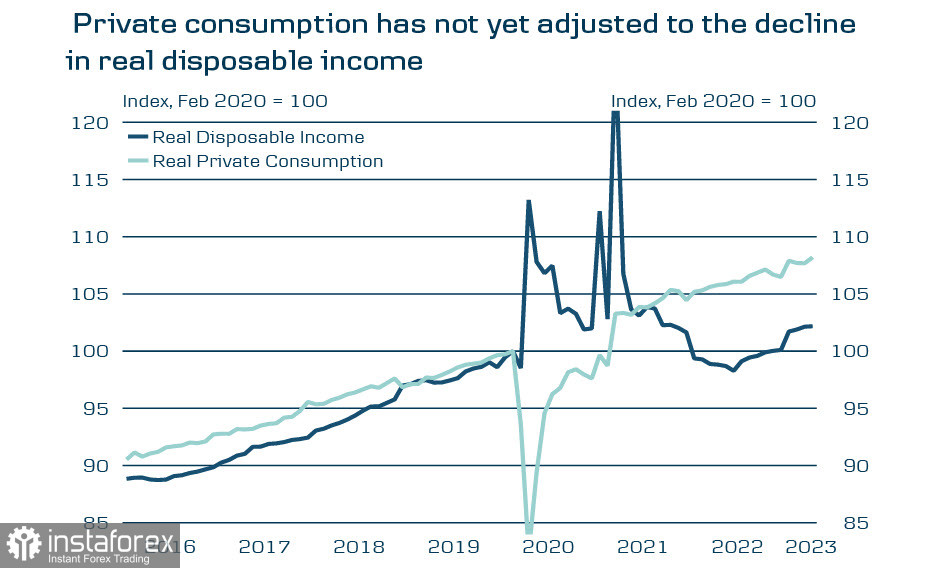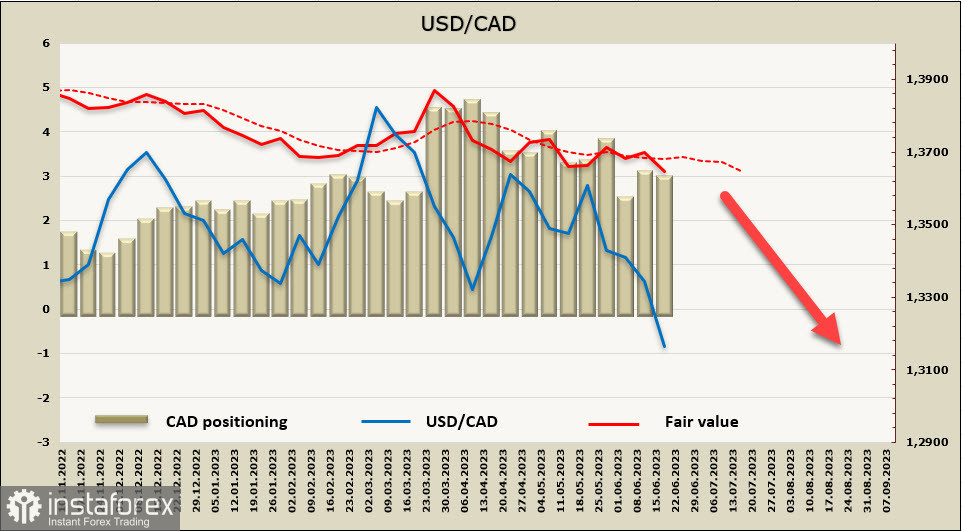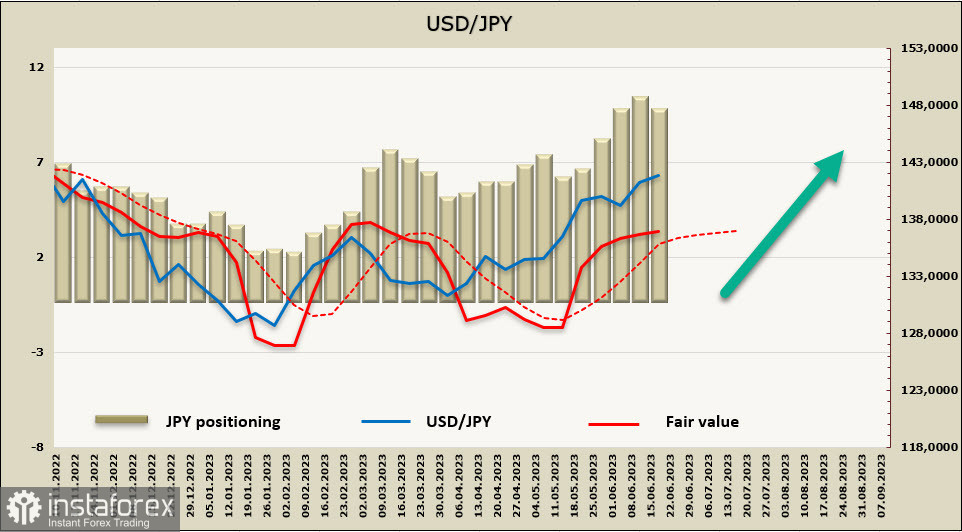The highly anticipated speech of Fed Chair Powell in the House of Representatives did not bring any new information. Powell justified the decision not to raise rates in June by saying that the speed of interest-rate increases is "not very important," now and outlined the criteria for sustainable inflation reduction. The dollar had a minimal reaction to Powell's speech, with slight selling pressure that resulted in a shallow correction.
The main cause of high inflation in the United States is considered to be the high level of consumption, as demand does not allow prices to start a sustainable decline. However, adjusting the overall accumulated household wealth for inflation shows that the "excess wealth" created by pandemic stimulus measures has already been eroded.

The decrease in consumption is inevitable, which will lead to a recession by the end of the year. As a result, in order to manage inflation expectations, the Federal Reserve will be forced to change its rhetoric to a more dovish stance, which will intensify pressure on the dollar.
The Bank of England held its regular monetary policy meeting on Thursday, and after its unexpected inflation report for May, there are no doubts that the Bank of Canada will raise rates. This increase has already been priced in by the markets and is unlikely to cause a rise in GBP on its own. However, the probability of another rate hike has increased, and if the meeting minutes are sufficiently aggressive, the pound may have grounds for another upward trajectory.
USD/CAD
The Canadian dollar strengthened after the release of the minutes from the Bank of Canada's latest meeting on June 7, as the markets received confirmation that the Bank of Canada is ready to consider further rate hikes and that the June hike was not a one-time action.
It was noted that GDP growth in the first quarter exceeded forecasts (3.1% versus 2.3%), with consumption growth being very strong at 5.8%, not only in the services sector but also in interest rate-sensitive goods. Consumption growth in Canada was stronger than expected, even considering population growth, and business investment and exports were stronger and more widespread than anticipated. There is clearly excess demand in the economy, and the measures implemented so far are not sufficiently restrictive.
The Bank of Canada expected inflation to decrease to 3% in the summer, but an unexpected increase from 4.3% to 4.4% was recorded in April. Trends in core inflation data raised doubts about the strength and longevity of the ongoing disinflation and heightened concerns that inflation could remain significantly above the 2% target.
Therefore, by raising rates on June 7, the Bank of Canada has left the door open for at least one more rate hike. If the inflation data for May (to be released on June 27) do not show a significant decrease, which is quite likely, the chances of another rate hike will increase. Accordingly, the Canadian dollar has grounds for further strengthening.
The net short position on CAD decreased by 106 million during the reporting week, reaching -2.753 billion. The positioning remains confidently bearish, and the estimated price has turned downward again.

A week earlier, we speculated that the USD/CAD could extend its decline if it receives a good reason. Now it has such grounds, and the main scenario is that the pair will continue to fall, with the nearest target being the lower band of the 1.3050/70 channel. A corrective upward retracement may stop near the resistance at 1.3225, followed by a downward reversal and a build-up of the downward momentum.
USD/JPY
The Bank of Japan left its current monetary policy unchanged, but the markets were more interested in whether there would be any explicit hints of a readiness to tighten in the future. From this perspective, the comments from BoJ Governor Kazuo Ueda appear ambiguous.
Ueda directly linked the possibility of policy change to two factors. The first factor is the deterioration in the functioning of the money market, which was the reason for expanding the yield curve control in December of last year. The second factor is the trend of inflation growth. There is no reason to intervene in policy due to the first factor, as the market is much more stable after the yield control policy change. The second factor is too uncertain, and there are no clear signs of inflation strengthening. Accordingly, there are no grounds to expect changes from this perspective.
Another factor that could influence the BOJ's stance is the sustained growth in average wages. The position here is that wage growth should not exceed 2% plus productivity growth, but since it is difficult to calculate productivity growth and it is quite volatile, we can conclude that the BOJ does not intend to take unexpected actions even in the case of higher wage growth.
Therefore, the market currently sees low chances of monetary tightening, which suggests that we shouldn't expect the BOJ to take significant actions to strengthen the yen in the near future.
The net short position on JPY slightly adjusted by 114 million during the reporting week, reaching -9.269 billion. The bearish bias is unquestionable. The estimated price is above the long-term average, indicating a bullish trend.

USD/JPY, as expected, continued its rise and stopped a few points away from the technical resistance at 142.50. Considering that the estimated price has slowed down its growth, the chances of a corrective decline have increased, with the nearest support at 140.90. In the event of hawkish hints from the BOJ, a decline towards the middle of the 138.50/90 channel is possible. However, the long-term trend remains confidently bullish, so a deep correction is not expected. The nearest goal is to consolidate above 142.50, followed by a transition into a sideways range, as there are also few grounds for a strong continuation of the upward movement.
 English
English 
 Русский
Русский Bahasa Indonesia
Bahasa Indonesia Bahasa Malay
Bahasa Malay ไทย
ไทย Español
Español Deutsch
Deutsch Български
Български Français
Français Tiếng Việt
Tiếng Việt 中文
中文 বাংলা
বাংলা हिन्दी
हिन्दी Čeština
Čeština Українська
Українська Română
Română

